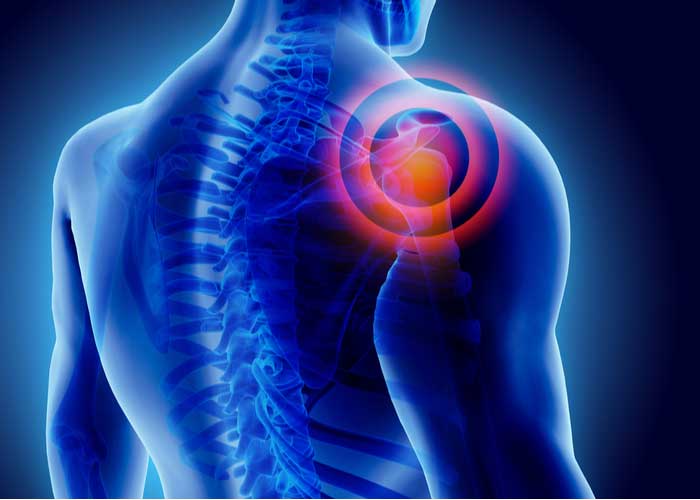What is shoulder impingement?
One of the most common causes of generalized shoulder pain is shoulder impingement. This is a condition caused by the rubbing of the rotator cuff tendons against the acromion (the highest portion of the shoulder blade). The inflammation from this process is called bursitis, which causes thickening of the tendons and bursae or fluid-filled sacs within the subacromial space resulting in limited space available for tendon movement. This decreased space for movement causes a pinching of the tendon and bursae between the bones. Patients who perform repetitive overhead activities, such as volleyball players or swimmers, are most at risk for developing shoulder impingement.

What is subacromial decompression?
There are muscles and tendons within the shoulder that travel under the acromion (subacromial) and attach to the humerus (upper arm bone). These muscles allow for an incredible range of motion, the tendons provide stability with shoulder movement, and fluid-filled sacs (bursae) help cushion shoulder movement. Patients who develop shoulder pain and weakness due to possible impingement or bursitis may be candidates for a surgical procedure called subacromial decompression. The goal of this procedure is to increase the amount of subacromial space available for tendon movement as well as remove any other irregularities that could be contributing to shoulder pain. Dr. Answorth A. Allen, an orthopedic shoulder surgeon, treats patients in Manhattan, New York City, Westchester, Long Island and surrounding areas who have suffered from shoulder impingement and are in need of a subacromial decompression.
How is subacromial decompression performed?
Dr. Allen performs a subacromial decompression arthroscopically, in which a small camera (arthroscope) is inserted into the shoulder, via a small incision, to visualize the subacromial space. Utilizing specialized surgical instruments, any irregularities such as bone spurs, tendon tears, inflamed, or irregular tissues are removed. The absence of these irregularities allows the muscles and tendons within the subacromial space to heal and reduces the irritation with shoulder movement.
What are the benefits of subacromial decompression?
Dr. Allen prefers the arthroscopic approach for subacromial decompression because it is minimally invasive. Due to the size of the camera and specialized surgical instruments, the incisions are small and allow for a faster recovery time for the patient. Arthroscopic subacromial decompression also reduces the risk of post-operative pain and inflammation as well as blood loss and infection.
What is the recovery period like after subacromial decompression?
Although the recovery period is variable, most patients can expect to return to daily routine and sporting activities with 3-6 months following a successful subacromial decompression. In general, patients in New York can expect the following:
- The shoulder joint to be immobilized by a sling immediately following surgery.
- Active movement of the shoulder and arm to begin within 2-3 days after surgery under the supervision and guidance of a physical therapist.
- Physical therapy guided protocol to achieve full range of motion and strength following surgery.
Shoulder Impingement Surgeon

Do you participate in activities that involve frequent overhead motions such as swimming and volleyball? If so, you may be at an increased risk of developing shoulder impingement. This condition is the most common cause of shoulder pain and can be treated conservatively. More severe cases may require surgical treatment such as subacromial decompression. Shoulder surgeon Doctor Answorth Allen provides diagnosis and surgical treatment for patients in Manhattan, New York City, Westchester, Long Island and surrounding areas who experience chronic shoulder pain. Contact Dr. Allen’s team today!






